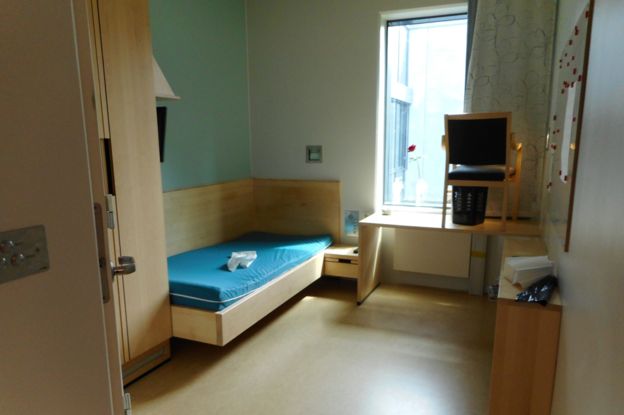Treating Inmates Like Humans
May 30, 2020
When you think of prison, what comes to mind? Groups of dirty prisoners fighting, armed guards, small and uncomfortable cells, and a sense of hatred shared among both prisoner and guard alike. In the U.S., this is a mostly accurate picture‒prisons are terribly unkempt places with hostile inhabitants both trapped there or working there. But why are prisons such awful places? Why are prisoners so hostile, and why don’t prisons work to stop crime in the U.S? If you ask me, the answer is simple: when you strip away someone’s humanity, they will cease to act human.
Places such as Alcatraz or Rikers Island are perfect examples of the failures in the U.S. corrections system. Alcatraz Island was possibly the most famous prison in the United States, and when it was open it was known to be a terrible place filled with some bad people. This is true; some very infamous criminals were held there and the guards treated inmates horribly. One example of this is a rule that lasted until the 1930s that stated that inmates were not allowed to talk except during meals or recreation times. Along with this, the guards and their families lived on the island with the prisoners, which meant that the families of guards would sometimes antagonize inmates and guards would frequently become paranoid or have issues with anger because of prolonged exposure to the prison. So much bad in one place on the shoulders of both the guards and the inmates earned Alcatraz Island the nickname “Devil’s Island” by locals. Cells in Alcatraz were extremely small, only large enough for a bunk and a toilet, allowing only one prisoner per cell, which, for an inmate, creates less risk of rapes or murders, but at the cost of being trapped like a caged animal. Although Alcatraz was shut down because it became too expensive to run, it perfectly illustrated the main problems of all American corrections buildings.
Let’s take a look at Norway’s most famous prison: Halden. Halden prison is labeled as one of the most luxurious prisons in the world and is one of Norway’s largest maximum-security prisons, housing around 250 inmates. To put that into perspective, Louisiana State Penitentiary in the U.S. houses about 6,300 inmates. Halden prison treats prisoners with much more freedom than prisons in the U.S., allowing prisoners to maintain jobs within the prison, have educational programs and daily training, around ten hours of time outside of their cells daily, and a much more inviting atmosphere, among many other services. To a citizen of the United States that all may seem very strange, but the effectiveness of this type of prison cannot be overlooked. According to prisonstudies.org, The United States has an incarceration rate of about 655 prisoners per 100,000 people in the country, while Norway’s incarceration rate sits at a lowly 60 prisoners per 100,000 people. However, the incarceration rate is not the only notable statistic between the two‒recidivism rates are possibly the greatest test of a prison system’s effectiveness, and Norway continues to outshine other countries. Recidivism rates are the percentage of criminals that are re-convicted of a crime after getting out of prison. According to the National Center for Biotechnology Information, the United States has a two-year recidivism rate of 60%, while Norway’s two-year recidivism rate of only 20%.
Although it may seem outlandish to most Americans to treat prisoners with respect and courtesy, Norway’s system has proved to the world that a rehabilitation centered system is much more effective than any other, and the U.S. has shown that a penal system is extremely defective. It would be wise for the rest of the world to look to Norway as an example of what should be done in order to reduce crime.











































































































































